
Imagine it—stocky, handsome tomato plants that need less-aggressive staking, rarely exceed 5 feet in height, and offer fruit choices in different sizes and colors. Want more? OK, they taste delicious. Plus, the larger members of this crew can match the production of their more traditional brethren. A dream, right? Nope. Not only is this a reality, but it’s trending. Welcome to the new world of dwarf tomatoes.
The first dwarf tomato appeared on the scene in France circa 1850. Neither determinate nor indeterminate, it was a genetic dwarf—a whole new classification. It didn’t garner much attention at the time, but new dwarf plants continued to appear in catalogs throughout the 20th century. During those years, gardeners looking for “patio-size” plants found a limited list of small-fruited options that were almost always red. That changed in 2004 when Patrina Nuske-Small and Craig LeHoullier initiated the Dwarf Tomato Project. They involved hundreds, perhaps even thousands, of amateur hybridizers in a collective effort to create a new realm of open-pollinated dwarf varieties that replicate the heirloom experience but are smaller and more accessible. The first results of their exciting work became available in 2010, and the production of dwarf varieties has skyrocketed since then.
There are many reasons to grow dwarfs
These plants are sturdy, more compact, and ideally suited to smaller gardens. The growth rate is half that of their larger counterparts. Dwarf tomatoes are perfect in containers, making them more versatile. Plus, they are easier to care for. Every year I get panicked midseason emails: “Help! What do I do with this 10-foot-tall tomato plant?” Even the largest of the dwarf varieties only rises to around half that height; moreover, pruning and staking needs are minimal, and plants are easier to tie and tend.
Get your buckets ready, and don’t let the smaller size of these varieties fool you. Dwarf plants can produce like champs and provide you with lots of tomatoes. And did I say that the fruit is delicious? Not OK, not passable, but drop-dead delicious. Flavors vary from variety to variety, of course, but are just as tasty as all of the classics we grow each summer. The list of advantages goes on and on. But however you look at it, dwarf tomatoes are a win for gardeners everywhere.
How dwarf tomatoes are created
New dwarf varieties appearing on the scene these days are most often crosses between a dwarf parent and a classic larger-size parent. Many of the new dwarfs carry the genes—and thankfully all the good taste—of favorite tomatoes such as ‘Paul Robeson’, ‘Cherokee Purple’, and ‘Brandywine’. As hybridizers test new crosses out in the field, they select for dwarf genetics, plant quality, size, taste, fruit color, striping, and other variables based on their goals. After they select a promising seedling, it will be grown out and selected for those qualities for seven to nine generations until all the fruit produced is consistent with the chosen form. The variety is then stable and can be called open-pollinated.
Microdwarfs
These varieties seldom grow over 12 inches tall and are stocky, full plants. Occasionally, certain varieties will reach 18 inches tall.
For a super-small option, turn to this golden gem

Name: ‘Orange Hat’
Habit: Determinate
Days to maturity: 60
A tomato that will be at home on a windowsill, on a sunny table on the patio, or alongside your petunias in a shared pot? Yes, yes, and yes. This tiny wonder is a handsome-looking plant that only reaches 6 to 9 inches tall and produces sweet, bright-orange cherry tomatoes that are perfect for salads or snacking.
It’s disease resistant and brilliantly colorful
Name: ‘Yellow Canary’
Habit: Determinate
Days to maturity: 60
Delicious golden fruits are borne on this small plant that’s perfect for small spaces and the edges of your raised beds. ‘Yellow Canary’ rarely reaches 12 inches tall. It produces fruit throughout the growing season and offers extra disease resistance to verticillium wilt and fusarium wilt.
A new red cherry that gets going early
Name: ‘Veranda Red’
Habit: Determinate
Days to maturity: 55 to 60
This sturdy and attractive microdwarf hybrid produces exceptionally tasty red cherry tomatoes. While it might grow larger than other microdwarfs, it typically tops out at 12 to 15 inches, making it still quite manageable. ‘Veranda Red’ produces generously over a long season and starts fruiting extra early.
What type is it?Classification and labeling often vary among seed purveyors and retail providers of dwarf tomatoes, but don’t be confused if they abandon the indeterminate and determinate labels altogether. Some modern dwarf varieties are labeled indeterminate or determinate, and many gardeners base their choices on those descriptions. But the whole class of these plants is smaller, having more of a determinate growth pattern, while many will happily produce fruit all season long like indeterminates. Most will not be classified as either. I generally like to categorize dwarf tomatoes in three groups: microdwarfs, minis, and tree types. You might think of them as small, medium, and large. |
Minis
A midrange option, minis usually top off at 20 inches tall. Less common is a cultivar that reaches 3 feet in height. Some plants exhibit a trailing habit, making them perfect candidates for a hanging basket, a large container, or even the top of a retaining wall.
A crack-resistant tomato with low acidity
Name: ‘Golden Hour’
Habit: Indeterminate
Days to maturity: 80
‘Golden Hour’ offers big production and great flavor, producing 1- to 2-ounce roma-shaped fruits that are yellow with some purple anthocyanin striping. They turn an amazing golden orange when ripe. This variety resists cracking, keeps for a long time, and has a sweet flavor with fruity notes and lower acidity. These fruits make a legendary sauce. ‘Golden Hour’ tops out at 20 inches tall.
Finally, a paste tomato for containers!
Name: ‘Dwarf Melanie’s Ballet’
Habit: Neither indeterminate nor determinate
Days to maturity: 70
This 2- to 3-foot-tall plant offers tender pink paste/roma-type fruits earlier in the season. This very productive variety was the first paste-type tomato introduced by the Dwarf Tomato Project. The 2- to 4-ounce fruits are meaty and dense with thick walls and thin skin, providing a delicious, old-time flavor.
For a purple-black selection, choose this velvety selection
Name: ‘Dwarf Velvet Night’
Habit: Neither indeterminate nor determinate
Days to maturity: 70
A hugely prolific black dwarf variety, ‘Dwarf Velvet Night’ produces formidable 2- to 3-ounce fruits on a 2-foot-tall plant. These larger cherries have a well-balanced, sweet, and earthy flavor with other complex notes typical of this color group. Clusters of five or six tomatoes abound all over this plant early in the season and continue for months.
TIP: Put the pruners downBecause dwarf tomatoes are smaller, removing precious new branches can limit fruit production. Avoid pruning the microdwarfs and minis altogether. However, removing some large or poorly positioned leaves on the tree types may be a smart move. Be aware that rugose foliage prevalent on some varieties can get heavy and weigh down some branches. |
Tree Types
These tomatoes exhibit a more familiar upright growth pattern, typically reaching 3 to 5 feet tall, with some nearing 6 feet. But the plants are generally heavily branched and sturdier than a classic tomato.
A tomato with funky shapes but consistent flavors
Name: ‘Delta Dwarf’
Habit: Neither indeterminate nor determinate
Days to maturity: 90
Bushy and growing up to 6 feet tall, ‘Delta Dwarf’ offers tasty 3- to 6-ounce fruits with a superb balance of acidic and sweet flavors. These fruits, which vary in size and shape, are often flattened, lobed, and colored green with red stripes. Marbled and very aromatic when fully ripe, they are perfect for burgers, slicing, or a unique sauce. This plant produces well in containers or the ground.
Consider this bicolored slicer for a tropical taste
Name: ‘Dwarf Suz’s Beauty’
Habit: Neither indeterminate nor determinate
Days to maturity: 85
A beautiful mix of red and yellow, these slicers can reach 14 ounces but average about 10. ‘Dwarf Suz’s Beauty’ is very tasty, with the rich, thick, juicy fruitiness typical of bicolors. The stocky plants reach 3 feet tall and produce generously for such a large-fruited variety.
Large, smooth-textured fruits make this variety a winner
Name: ‘Boronia’
Habit: Neither indeterminate nor determinate
Days to maturity: 70
This rugose dwarf grows from 3 to 4 feet tall and produces gorgeous medium to large (4 to 16 ounces) oblate-shaped fruit that are deep rusty-rose in color, often with darker shoulders. They are meaty with an intense flavor. This tomato resembles ‘Cherokee Purple’ but has the heirloom ‘Paul Robeson’ as one of its parents.
Rethink the tomato cage
Keeping tomatoes upright increases circulation and helps prevent fruit blemishes, pest damage, and sunscald, encouraging overall health. But dwarf tomatoes don’t need as much support as their larger cousins. The amount of support you offer and the form it takes will depend on the size of your plant.
Microdwarfs
Tiny micros don’t need much help staying upright, and you won’t stake them as much as brace them. I’ve seen savvy gardeners repurpose chopsticks or skewers to great effect with these plants. Additionally, growing them next to each other can provide some natural support.
Minis
These midsize dwarfs require more support than microdwarfs. The tools you use will be familiar but easier to handle, since you’re tending to smaller plants. You know those light, standard-size tomato cages you abandoned many years ago? They can actually work for the smaller and midsize dwarfs.
Tree Types
Larger dwarf plants benefit from heavier cages or multiple stakes or poles, especially when fruit set is intense. You know the drill—you just won’t have to work as hard at it as you would with larger plants. If you’re doing your job right, some varieties will often get so heavy with fruit that additional late-season staking is advised. I hope you have that problem!
Scott Daigre is the owner of Powerplant Garden Design in Ojai, California. He also owns and operates Tomatomania!, the world’s largest tomato seedling sale.
Photo: courtesy of Scott Daigre
Illustration: FG staff





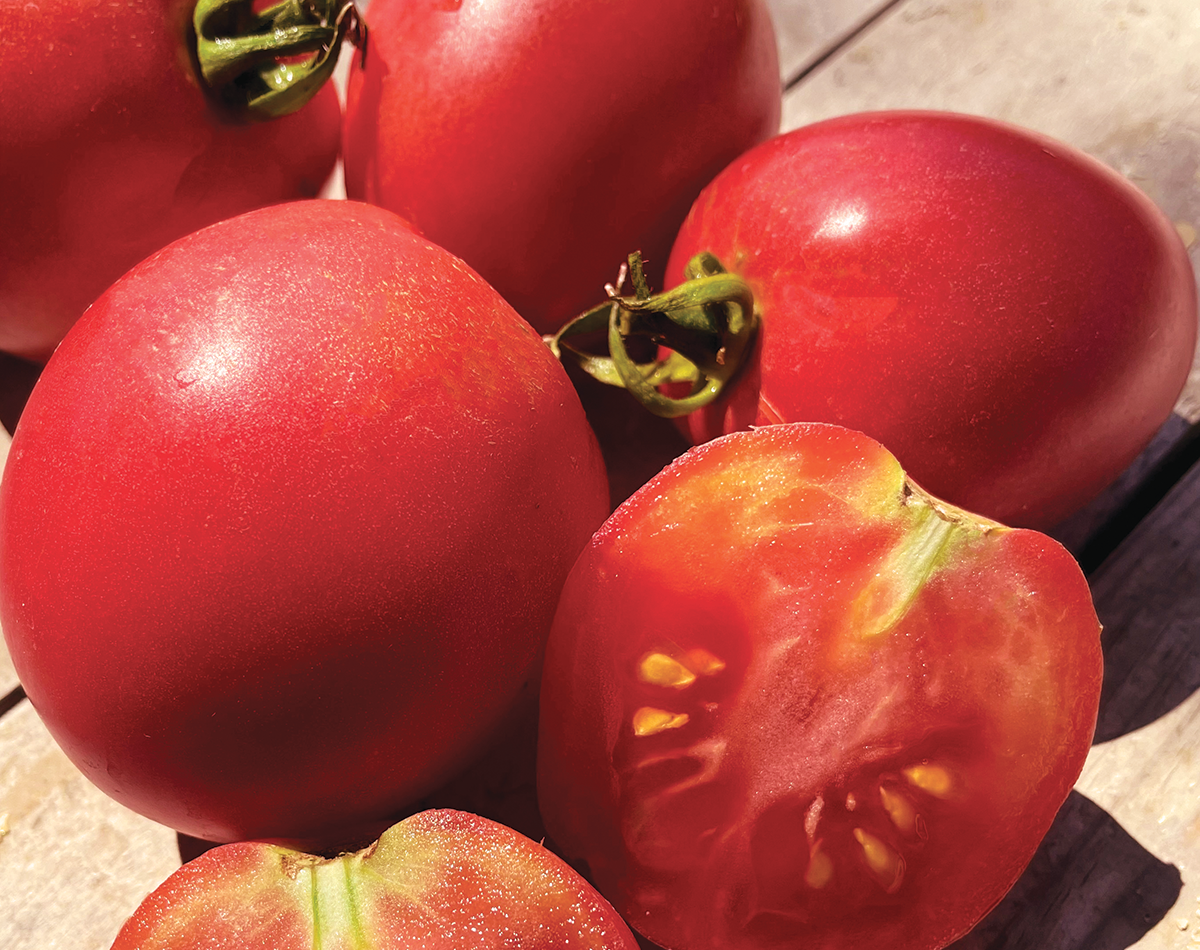
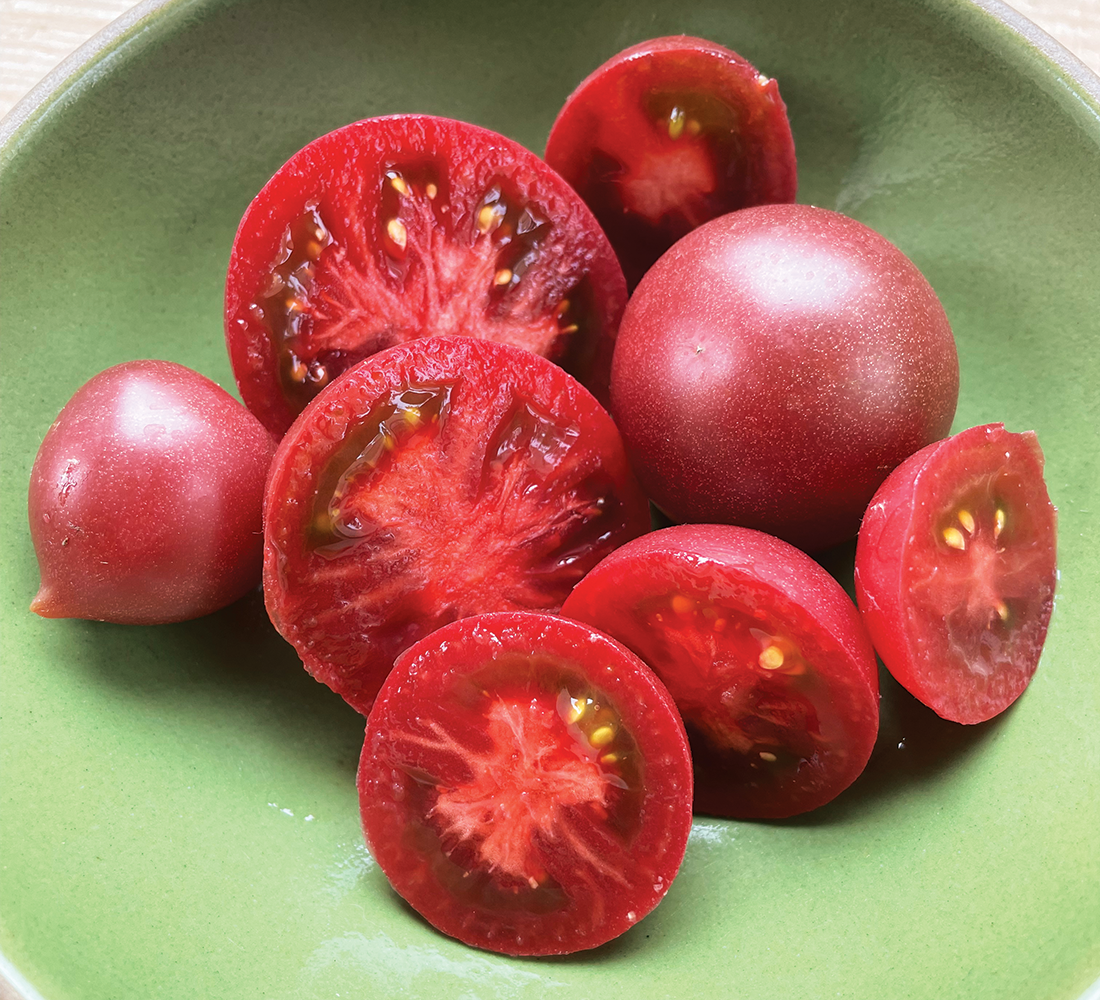
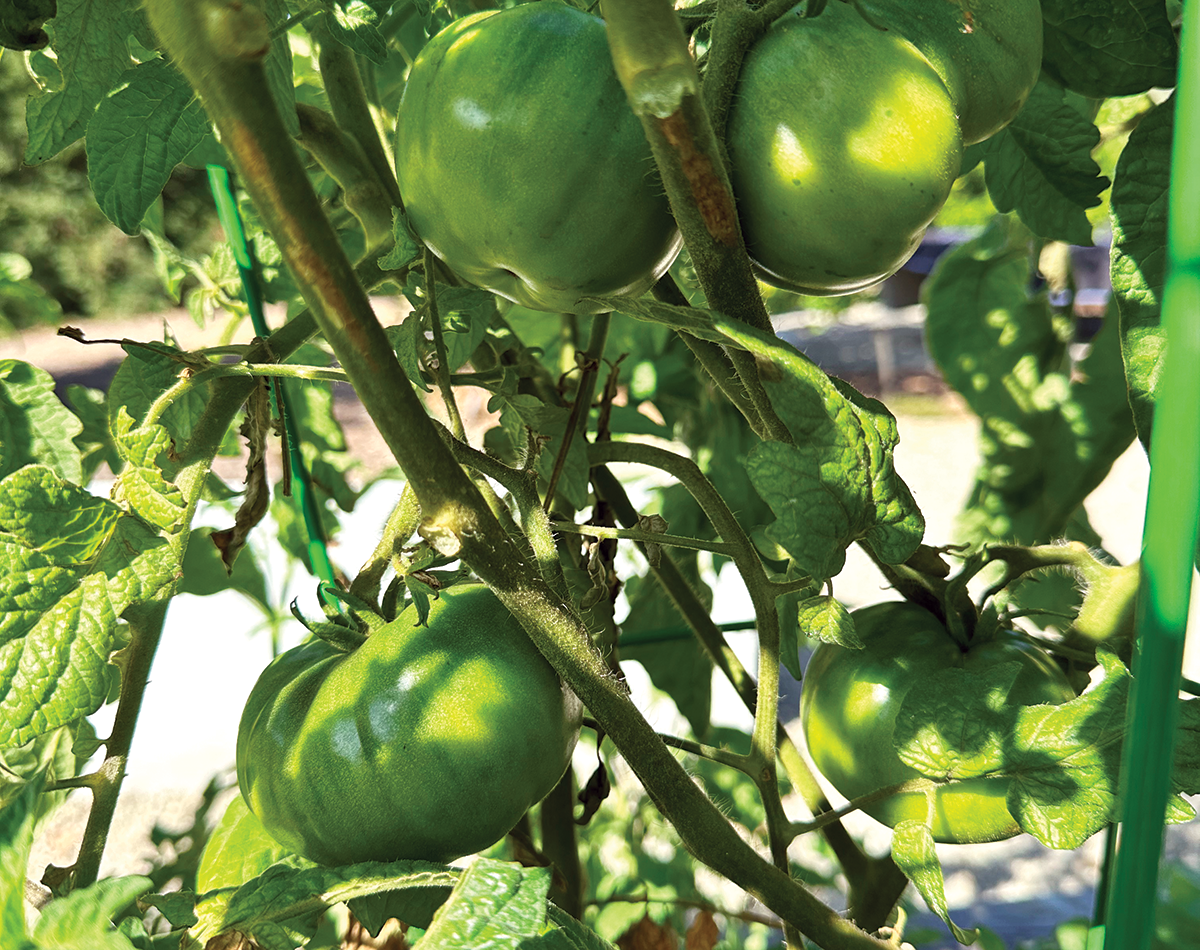


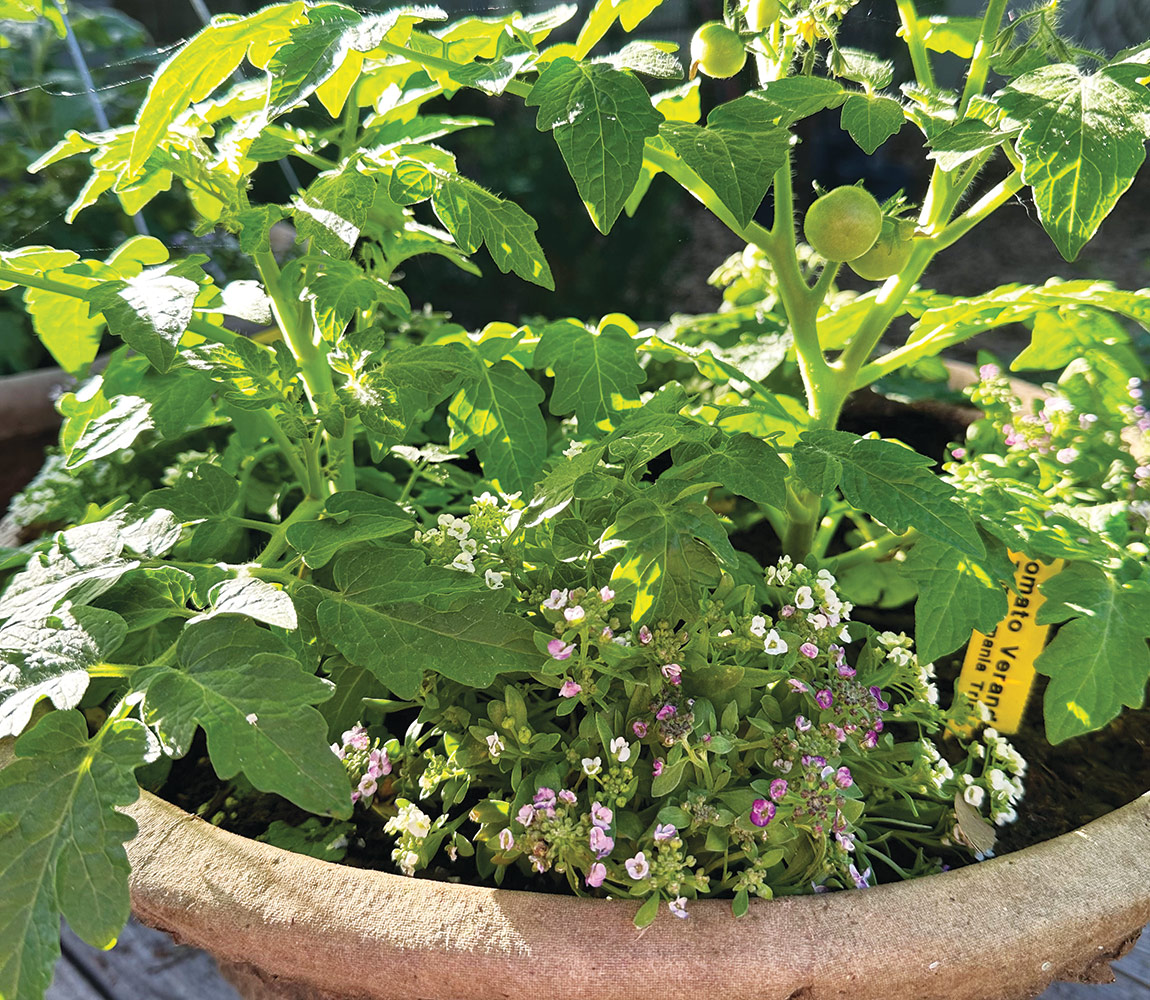




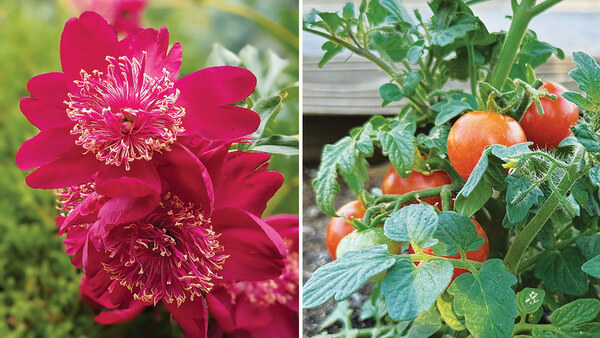













Comments
Log in or create an account to post a comment.
Sign up Log in